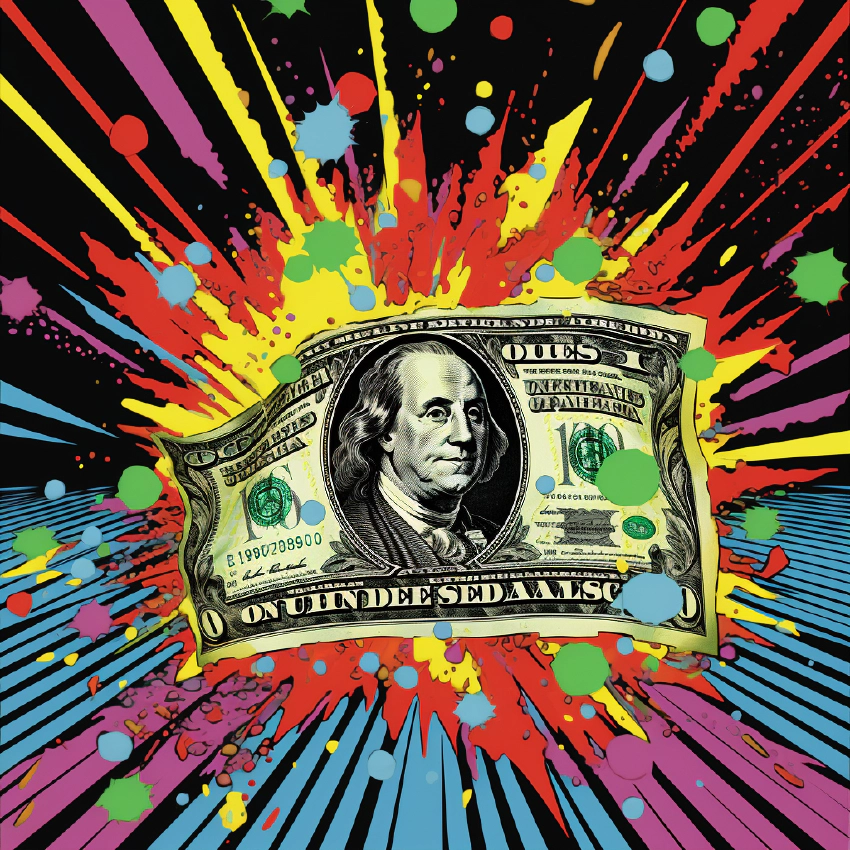
US Dollar Running Strong
Here are some of the things I have been thinking about this week:
The US Dollar Strength
The US dollar has seen an impressive run recently, with 11 consecutive weekly gains. Measured moves based on past performance indicate the US Dollar Index (DXY) could rise to the 107.50-108 level. This strength in the dollar has put pressure on assets like stocks, gold, silver, and cryptocurrencies.
The Fed’s aggressive interest rate hikes are a key driver of dollar strength, as money rotates into the safety of the US dollar. At the same time, higher interest rates have sucked money out of the stock market and into bonds. This dynamic explains much of the stock market’s recent weakness.
Many narratives that were popular 6-12 months ago, like dollar devaluation, have been disproven. The takeaway is that despite changing narratives, chart patterns tend to repeat based on human nature.
Equity Markets
The Nasdaq has broken its sequence of higher highs and higher lows, establishing a downtrend since July on the daily chart. The weekly chart shows a pattern similar to the dot-com bubble, with a large parabolic advance, sharp correction, reflexive bounce, and now another leg down. This analogy, along with excessive valuations in 2021, suggest the Nasdaq is likely headed back toward its COVID lows over the next year.
Recent data indicates hedge funds have aggressively reduced long exposure and increased shorts in anticipation of more downside. The Fed’s messaging of higher rates for longer has finally been accepted, leading to model-based downgrades for many overvalued stocks. Even Apple looks overpriced based on updated valuation models factoring in a higher discount rate.
Economic Outlook
The Fed’s rate hikes represent the most aggressive tightening in its history over such a short timeframe. It would be foolish to think this will not break something in the economy. There are likely cracks developing that are not yet visible.
Jobs data remains strong, but employment is a lagging indicator. Leading indicators like business investment plans show companies pulling back on spending. This will ripple through the economy in the coming months.
Inflation cracking sustainably below 2-3% appears unlikely. Wage inflation from unions will further pressure prices higher, even if it helps workers afford cost of living increases. It will be challenging for the Fed to justify renewed QE with inflation sticky above target.
The housing market is frozen, with few buyers and sellers transacting. Existing homeowners won’t sell with rates so much higher now. Distressed selling of Airbnbs and second homes could hit later this year as mortgages come due. Commercial real estate is another area under pressure not fully apparent yet.
Top Investment Ideas
Commodity producers like Brazil look attractive, with charts showing potential bottoming patterns and valuations near decade lows.
Uranium has seen a huge run-up into resistance. Long-term fundamentals look positive, but wait for a pullback before starting a position.
Oil faces converging downtrend resistance around $93. With short-term demand possibly falling if there is a recession, there is potential for oil to come down a bit if any labor market weakness appears.
Bitcoin’s correlation to stocks makes it a risky asset currently. More downside is possible if equity markets continue declining, potentially to retest the $15k level. Eventually crypto should regain a role as a digital alternative to gold.
I remain focused on avoiding complacency during this transition from a Fed put-driven bull market to an environment of higher volatility. Opportunities exist but require discipline on entry points and asset diversification.